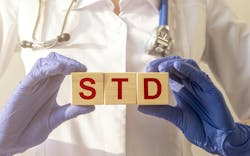The U.S. Department of Health and Human Services (HHS) released the 2021–2023 Progress Report for the Sexually Transmitted Infections National Strategic Plan for the United States: 2021–2025.
The progress report provides a high-level overview of progress on select federal agency programs, policies, research, and other activities during fiscal years 2021–2023.
The progress report features an at-a-glance table of the status of seven core indicators and seven disparities indicators, which were identified in the national plan as a quantitative approach to measuring progress on STI prevention and care in the United States. The most recently available data reveal that seven of the indicators have met or are moving toward annual targets and that seven have not met or are moving away from annual targets. Of this latter group, six indicators relate to syphilis, which is the focus of the National Syphilis and Congenital Syphilis Syndemic Federal Task Force led by HHS Assistant Secretary for Health, Admiral Rachel Levine, M.D.
The Herpes Simplex Virus (HSV) Addendum to STI National Strategic Plan sets a unified national response to HSV.
HSV was not initially included in the national strategy, which focused on chlamydia, gonorrhea, syphilis, and human papillomavirus. This is because the plan originally focused on STIs in the United States for which there are federally funded control programs. Additionally, HSV is not a nationally notifiable condition and there is no existing national surveillance system for HSV or neonatal herpes to measure progress. Likewise, diagnosing genital herpes can be challenging, since many people do not have symptoms.

